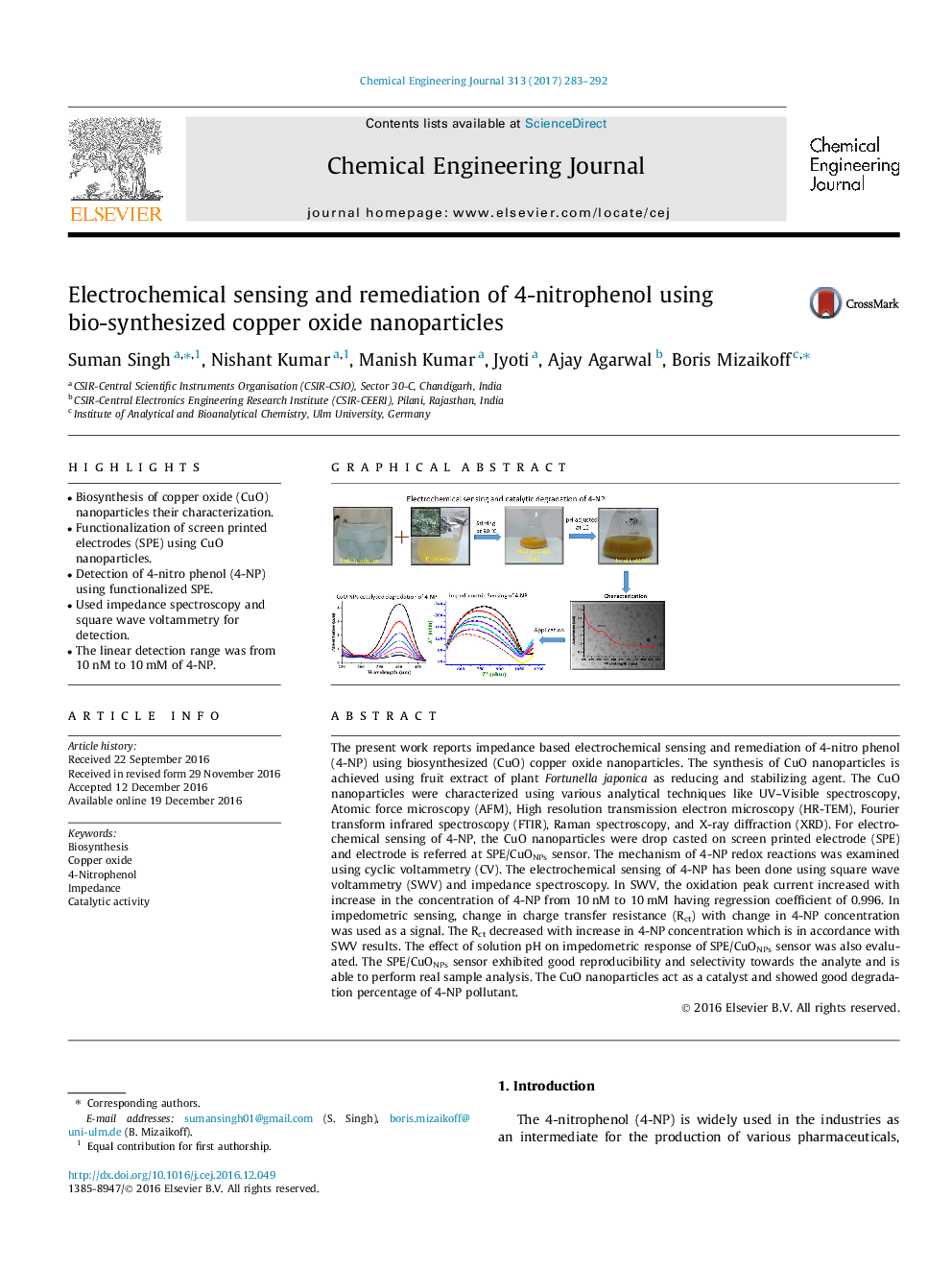| Article ID | Journal | Published Year | Pages | File Type |
|---|---|---|---|---|
| 6466546 | Chemical Engineering Journal | 2017 | 10 Pages |
â¢Biosynthesis of copper oxide (CuO) nanoparticles their characterization.â¢Functionalization of screen printed electrodes (SPE) using CuO nanoparticles.â¢Detection of 4-nitro phenol (4-NP) using functionalized SPE.â¢Used impedance spectroscopy and square wave voltammetry for detection.â¢The linear detection range was from 10 nM to 10 mM of 4-NP.
The present work reports impedance based electrochemical sensing and remediation of 4-nitro phenol (4-NP) using biosynthesized (CuO) copper oxide nanoparticles. The synthesis of CuO nanoparticles is achieved using fruit extract of plant Fortunella japonica as reducing and stabilizing agent. The CuO nanoparticles were characterized using various analytical techniques like UV-Visible spectroscopy, Atomic force microscopy (AFM), High resolution transmission electron microscopy (HR-TEM), Fourier transform infrared spectroscopy (FTIR), Raman spectroscopy, and X-ray diffraction (XRD). For electrochemical sensing of 4-NP, the CuO nanoparticles were drop casted on screen printed electrode (SPE) and electrode is referred at SPE/CuONPs sensor. The mechanism of 4-NP redox reactions was examined using cyclic voltammetry (CV). The electrochemical sensing of 4-NP has been done using square wave voltammetry (SWV) and impedance spectroscopy. In SWV, the oxidation peak current increased with increase in the concentration of 4-NP from 10Â nM to 10Â mM having regression coefficient of 0.996. In impedometric sensing, change in charge transfer resistance (Rct) with change in 4-NP concentration was used as a signal. The Rct decreased with increase in 4-NP concentration which is in accordance with SWV results. The effect of solution pH on impedometric response of SPE/CuONPs sensor was also evaluated. The SPE/CuONPs sensor exhibited good reproducibility and selectivity towards the analyte and is able to perform real sample analysis. The CuO nanoparticles act as a catalyst and showed good degradation percentage of 4-NP pollutant.
Graphical abstractDownload high-res image (113KB)Download full-size image
